XR Digital
At XR Digital, we blend creativity, technology, and strategy to deliver unparalleled digital solutions. Explore the possibilities with us as we push the boundaries of innovation and transform your vision into reality.
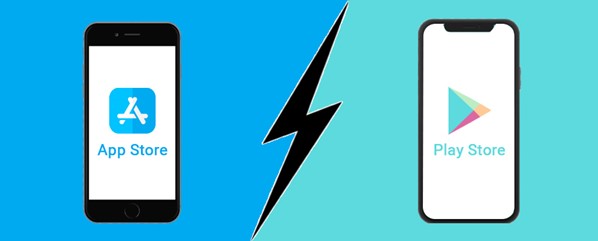
In the ever-expanding landscape of mobile applications, two dominant platforms, the Apple App Store and Google Play Store, stand as gatekeepers to the vast world of digital content. The iOS App Store, curated by Apple, and the Google Play Store, managed by Google, serve as primary distribution channels for mobile apps, shaping the experiences of millions of users worldwide.
This explores the key distinctions between these app marketplaces, delving into their unique features, user bases, and developer ecosystems. As we navigate the nuances of the iOS App Store and Google Play Store, we uncover the factors that contribute to their strengths, influencing the preferences of both app developers and consumers in the dynamic realm of mobile technology. Welcome to the comparative journey of two giants in the app ecosystem.
If you love reading comparisons like these, you should definitely read other wonderful comparison like angular 4 vs angular 2 performance, Hybrid Apps vs Native Apps, Python vs Node.js, and UI vs UX.
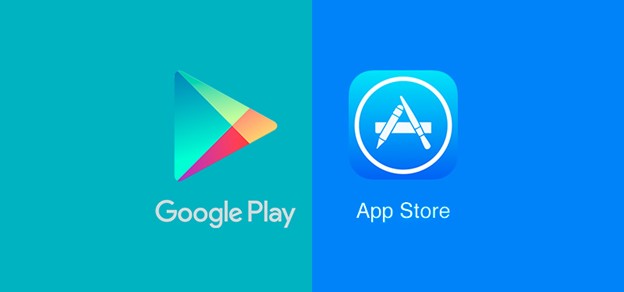
The iOS App Store and Google Play Store are the official digital distribution platforms for mobile applications on the iOS and Android operating systems, respectively.
The iOS App Store, exclusively catering to Apple devices like iPhones, iPads, and iPod Touches, is renowned for its stringent app review process. This meticulous curation ensures that apps available on the platform meet Apple’s high standards for quality, security, and performance. The iOS ecosystem is known for its cohesive user experience, with applications seamlessly integrating into the iOS environment and adhering to a consistent design language.
One notable trend in the app stores is the increasing integration of emerging technologies. Artificial Intelligence (AI) has become a driving force in app development, with examples of artificial intelligence found in voice assistants, recommendation systems, and personalized experiences.

On the other side of the mobile spectrum, the Google Play Store caters to the expansive world of Android-powered devices. This includes smartphones, tablets, and an array of other gadgets, fostering a diverse ecosystem. Unlike the iOS App Store, the Google Play Store is known for its more open approach, allowing a broader range of applications to be published. This inclusivity contributes to the platform’s vast and varied app selection.
Virtual Reality (VR) has made its mark, with apps exploring virtual reality in healthcare, gaming, education, and more. The iOS App Store and Google Play Store have become hubs for VR app development, showcasing the potential of immersive experiences in various domains.
Both app stores serve as centralized platforms for users to discover, download, and update mobile applications. They provide a wide range of apps, including games, productivity tools, social networking apps, and more.

Exclusive to Apple devices, including iPhone, iPad, and iPod Touch.
Designed for the iOS operating system.
Implements a stringent app review process, ensuring quality and adherence to Apple’s guidelines.
Supports app sales, in-app purchases, and subscription models. Users are generally more willing to pay for apps.
Primarily uses Swift and Objective-C for app development.
Follows Apple’s Human Interface Guidelines, influencing the design principles for iOS apps.
Limited device types, making app development and testing more streamlined.
Holds a significant market share, but it is generally lower than the Android market share.
Available on a variety of Android devices from different manufacturers.
Designed for the Android operating system.
Generally has a more open app submission process, with less restrictive criteria compared to the App Store.
Supports app sales, in-app purchases, and subscriptions. Ad-supported models are more prevalent, and there may be a higher reliance on free apps.
Primarily uses Java and Kotlin for app development.
Adheres to Material Design principles, shaping the design language for Android apps.
Runs on a wide range of devices with varying screen sizes, resolutions, and hardware specifications, leading to greater device fragmentation.
Dominates the global market share due to the widespread adoption of Android devices.

Users on iOS devices tend to spend more on apps, making the platform more lucrative for developers in terms of revenue.
The App Store has a stringent app review process, ensuring that only high-quality and well-designed apps are available to users.
Due to the limited number of iOS devices, developers can create apps with a more consistent user experience across different devices.
iOS is often praised for its strong emphasis on security and user privacy, providing a sense of trust to users.
Some apps and updates are released on iOS before other platforms, offering early access to new features and functionalities.
Apple provides comprehensive developer tools and resources, making it easier for developers to create high-quality apps.
Apple users often exhibit strong brand loyalty, making it easier for developers to build a dedicated user base.
Android dominates the global market share, providing a larger potential user base for apps on the Google Play Store.
Android runs on a wide range of devices with varying specifications, allowing developers to reach a diverse audience.
The app submission process on Google Play is generally more open, allowing a broader range of apps to be published.
Android apps can be developed using various programming languages, providing flexibility to developers.
Ad-supported apps are more common on Android, providing developers with alternative monetization models.
Android offers more customization options for users, including the ability to use widgets on the home screen.
Seamless integration with Google services such as Gmail, Google Drive, and Google Maps enhances user experience.
Google Play allows for more experimentation with app designs and features, fostering innovation in the Android app ecosystem.

The rigorous app review process can lead to delays in getting apps published, and rejection can occur if apps do not meet Apple’s strict guidelines.
IOS has more restrictions on customization, both in terms of the user interface and the functionalities that apps can offer.
Apple’s closed ecosystem can limit the flexibility and choices available to both developers and users, as it prioritizes Apple’s proprietary technologies.
The cost of developing and maintaining iOS apps can be higher due to the need for specialized hardware (Mac) and software (Xcode).
Apple charges a 30% commission on app sales and in-app purchases, which some developers find as a significant portion of their revenue.
The wide variety of Android devices with different screen sizes, resolutions, and specifications can lead to challenges in optimizing apps for all devices.
The open nature of the Android platform can make it more susceptible to security threats, including malware and app vulnerabilities.
Android device manufacturers and carriers have control over when devices receive operating system updates, leading to delayed updates for users.
While Android has a larger user base, individual users on average spend less on app purchases and in-app transactions compared to iOS users.
The Google Play Store is more saturated with apps, making it challenging for new apps to stand out and gain visibility.
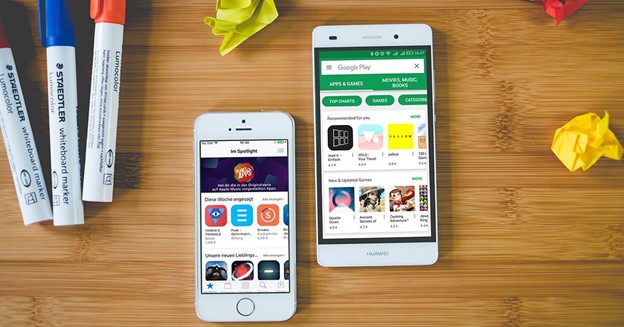
Despite a long, drawn-out approval process and intense competition, the Apple App Store is a great investment for developers, with a reasonable registration fee and a high percentage of sales going to the developer. Developers for the Google Play Store enjoy a less tedious approval process, and it’s affordable to submit apps. Here are some reasons why developers and users may prefer the iOS App Store:
The iOS App Store is part of the Apple ecosystem, which includes devices like iPhones, iPads, Macs, and Apple Watches. Developers may choose iOS for its seamless integration across Apple devices.
Historically, iOS users have been known to spend more on app purchases and in-app transactions compared to Android users. If a developer’s monetization strategy relies on app sales or in-app purchases, iOS can be more lucrative.
The iOS user base often includes users with higher income levels, and iOS devices are popular in regions with strong purchasing power. This can be appealing for developers targeting specific demographics.
While the app review process is stringent, some developers appreciate the thoroughness of Apple’s review process as it can contribute to a higher standard of quality on the platform.
Some developers prefer Apple’s development tools, including Xcode, for creating iOS apps. The tools are known for their efficiency and ease of use.
The iOS platform provides opportunities for subscription-based models, and Apple’s ecosystem emphasizes user privacy, which can be attractive for certain types of apps.
IOS updates are typically rolled out simultaneously across a majority of devices, leading to a more consistent user experience compared to Android’s fragmentation.
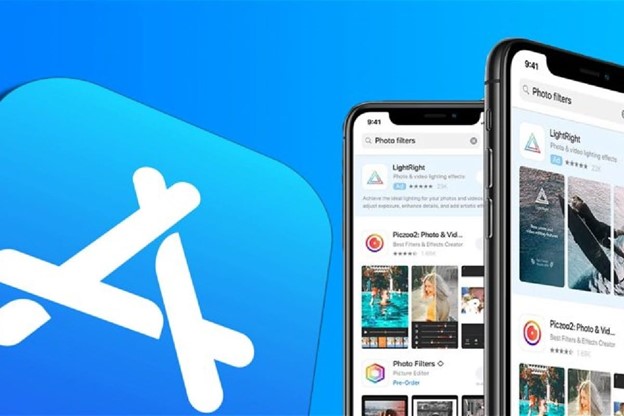
In the realm of mobile applications, the iOS App Store and Google Play Store stand as pillars, each with its distinctive features and strengths. The iOS App Store, embedded in Apple’s ecosystem, appeals to users seeking seamless integration, higher revenue potential, and a curated app experience. On the other hand, the Google Play Store, with its wider market share and open submission process, offers flexibility, customization, and a diverse user base. The choice between them depends on factors like user demographics, revenue models, and development preferences.
Both app stores have wide audiences, ensuring good visibility for an app, but you may have to work a little harder to make money with a Google Play Store app, as Android users tend to prefer free apps.
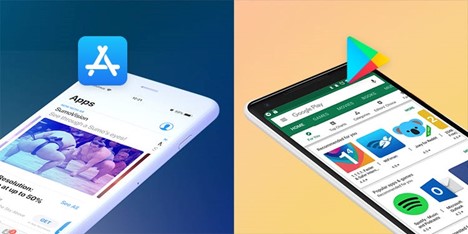
In the rapidly evolving landscape of digital services, XR Digital recognizes the pivotal role that mobile applications play in shaping user experiences. By seamlessly integrating XR technologies with the unique features of these app marketplaces, XR Digital aims to elevate user experiences through immersive applications. In a world where the distinctions between physical and virtual realms continue to blur. XR Digital’s strategic approach involves navigating the nuances of both the iOS and Android ecosystems, ensuring that brands can harness the power of XR within the diverse landscapes of the App Store and Play Store.
The iOS App Store and Google Play Store are the official app distribution platforms for Apple and Android devices, respectively. While both serve the same fundamental purpose, their ecosystems, app approval processes, and monetization models differ significantly. Understanding these distinctions is crucial for developers and users alike.
The app approval process is notably stringent in the iOS App Store, involving a thorough review by Apple to ensure quality and adherence to guidelines. In contrast, the Google Play Store generally has a more open submission process, making it easier for developers to publish apps. Exploring these differences is essential for developers planning to launch their apps on either platform.
Developing for the iOS App Store offers advantages such as a potentially higher revenue per user, a more consistent user experience due to limited device types, and seamless integration within the Apple ecosystem. Understanding these benefits helps developers make informed decisions based on their target audience and revenue models.
One significant challenge for developers on the Google Play Store is the diverse range of Android devices with varying specifications. This device fragmentation can complicate app optimization, and developers need to consider this aspect when creating applications for the Android platform.
At XR Digital, we blend creativity, technology, and strategy to deliver unparalleled digital solutions. Explore the possibilities with us as we push the boundaries of innovation and transform your vision into reality.